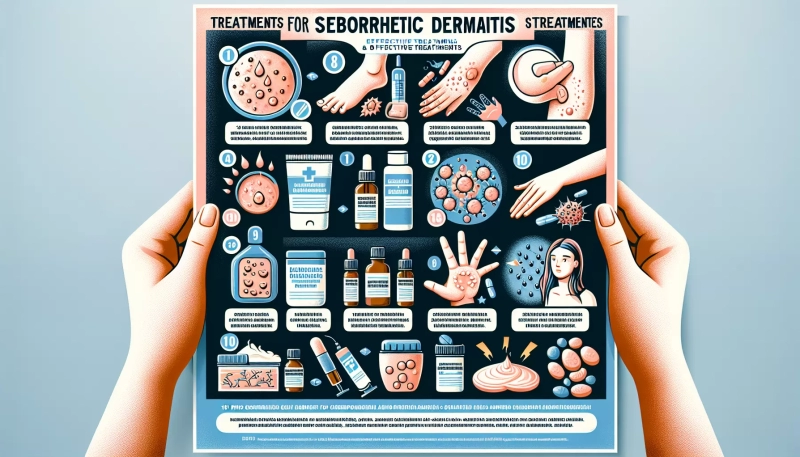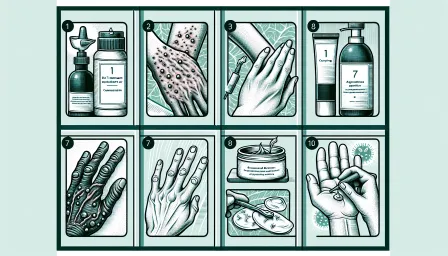10 Effective Treatments for Seborrheic Dermatitis: Relief Strategies Explored

Flaky scalp, red face, or itchy chest? Explore 10 effective treatments for seborrheic dermatitis, from medicated shampoos to natural remedies and stress management strategies.
Seborrheic dermatitis is a common, chronic skin condition characterized by red, itchy, and flaky skin, particularly on areas of the body with high oil (sebum) production such as the scalp, face, chest, and back. While its exact cause is not fully understood, its development is linked to an irregular response to the yeast present in the skin's oil, alongside other factors like stress, cold weather, and certain medical conditions. This article delves into ten effective treatments that offer relief and management strategies for those grappling with seborrheic dermatitis.
Understanding Seborrheic Dermatitis
Before exploring the treatments, it's essential to grasp what seborrheic dermatitis is and how it manifests. Knowing the condition's triggers and symptoms will enable a more targeted treatment approach, tailored to individual needs and severities.
1. Medicated Shampoos
For those experiencing seborrheic dermatitis on the scalp, medicated shampoos containing active ingredients such as ketoconazole, selenium sulfide, zinc pyrithione, or salicylic acid can be highly effective. These ingredients help reduce fungal growth, soothe inflammation, and remove the flaky, dead skin cells.
2. Topical Antifungals
Applying topical antifungal creams or ointments directly to affected areas can significantly diminish yeast presence on the skin, thereby reducing symptoms. Ketoconazole and ciclopirox are commonly prescribed antifungals for treating seborrheic dermatitis.
3. Topical Corticosteroids
To quickly alleviate inflammation and itchiness, topical corticosteroids like hydrocortisone can be applied. However, due to potential side effects, these are generally recommended for short-term use under medical supervision.
4. Calcineurin Inhibitors
Topical calcineurin inhibitors, such as tacrolimus and pimecrolimus, serve as non-steroidal alternatives to corticosteroids. They work by suppressing the immune system to reduce inflammation and irritation but are typically reserved for cases where other treatments have failed.
5. Light Therapy
Phototherapy using ultraviolet (UV) light can be an effective treatment for severe or persistent cases of seborrheic dermatitis. UV light helps reduce inflammation and yeast growth on the skin. Treatment should always be administered by a professional to minimize risks like skin damage.
6. Tea Tree Oil
For those seeking a more natural remedy, tea tree oil has shown promise in reducing symptoms thanks to its antifungal and anti-inflammatory properties. It must be diluted before application to avoid skin irritation.
7. Aloe Vera
Aloe vera is renowned for its soothing and anti-inflammatory effects, making it another natural option for managing seborrheic dermatitis. Regular application of aloe vera gel can help alleviate redness and scaling.
8. Dietary Adjustments
Although research is ongoing, some individuals may find relief from symptoms by making dietary adjustments. Reducing sugar and yeast-containing foods, which may feed the yeast on the skin, is one approach to explore.
9. Stress Management
Given that stress can exacerbate seborrheic dermatitis, incorporating stress-reduction strategies like meditation, yoga, or regular exercise into your routine may offer indirect benefits in managing the condition.
10. Regular Skincare Routine
Maintaining a gentle and regular skincare routine can help manage seborrheic dermatitis. Avoid harsh soaps and products that can irritate the skin, and moisturize regularly to maintain the skin's barrier.
Conclusion
Discovering an effective treatment for seborrheic dermatitis can be a journey of trial and error, as what works for one individual may not work for another. It's crucial to consult with a healthcare provider or dermatologist to discuss and tailor treatment options according to your specific condition and medical history. By understanding the array of available treatments – from medicated products to natural remedies and lifestyle adjustments – one can take informed steps towards managing and alleviating the symptoms of seborrheic dermatitis.





















